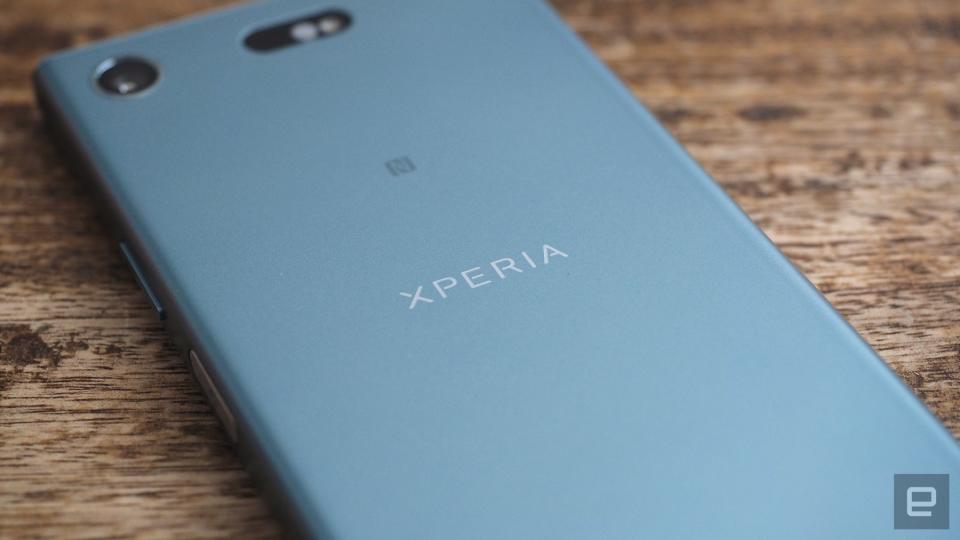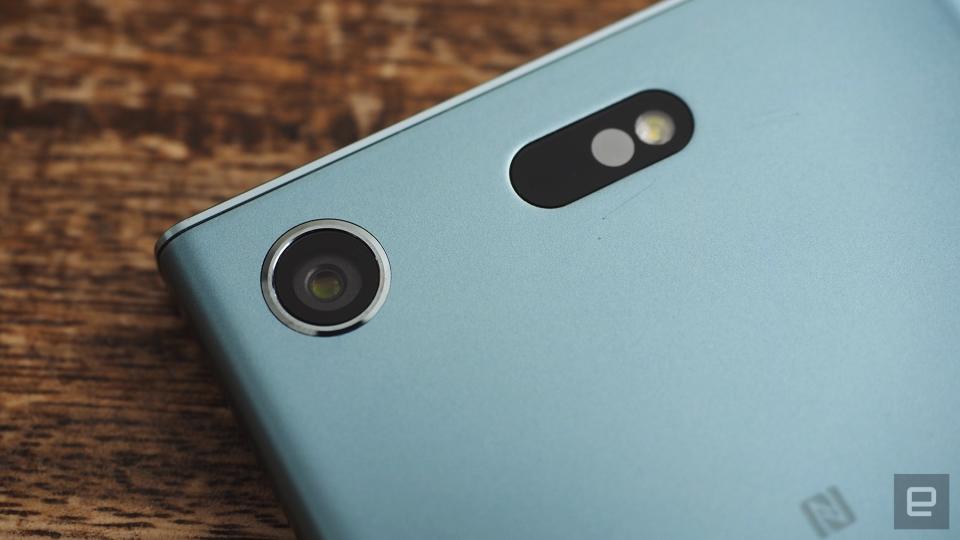I really wanted to like Sony's Xperia XZ1 Compact
Purely because the company is among the last to make small phones.
No one really makes decent small phones anymore. Apple hasn't updated the iPhone SE in almost two years, and the "mini" flagship phase fizzled out long before that. Tracking down a sub-5-inch Android phone you'd actually consider buying could be the plot of the next Indiana Jones movie. I guess it'd be a short flick, though, because you only have to look as far as Sony and its "Compact" smartphones, which the company keeps making despite the wider industry's having moved on. Perhaps I'm a champion of choice or just feel nostalgia for a time when phones were smaller and life was simpler, but I wanted to like the Xperia XZ1 Compact, released last fall. I really did.
I mean, what's not to like about a cute little phone with an octa-core Snapdragon 835 roaring away inside? OK, so maybe 720p is a resolution you frown at these days, even if the thing does only have a 4.6-inch LCD display. But otherwise, 4GB of RAM, 32 gigs of expandable storage, Gorilla Glass 5, Android 8.0 Oreo, IP65/68 waterproof rating -- these are all things you're quite happy to see on a spec sheet. The 2,700mAh battery keeps the thing powered up for significantly longer than the typical daily cycle, too, though you would kind of expect that, given that it's powering so few pixels.
Sony also equipped the XZ1 Compact with some of the best imaging tech it has to offer. There's an 8-megapixel front-facing camera with wide-angle lens for the selfie generation, but more important is the 19MP "Motion Eye" camera round back. It boasts phase detection and laser autofocus, not to mention super-slow-mo video recording at 960 fps, just one of Sony's exhausting list of camera features and tools, such as 3D scanning. The shutter speed isn't always able to keep up with the energetic thrashing of the guy from Crazy Town in a dingy pub, but low-light performance, in general, is solid.

In better lighting conditions, the thing shoots detailed, well-saturated pictures -- something that doesn't come as a shock, considering the hardware at play. But wow, does the XZ1 Compact rub me the wrong way on a daily basis. The fingerprint sensor that doubles as a power button can be temperamental, probably because it's so small. This won't be a problem on US models, of course, since they don't possess fingerprint readers. Sony only recently committed to adding these to all future Xperias launched stateside.

Any minor jolt in the headphone jack area pauses music as if you've decoupled your cans entirely, which couldn't be more frustrating. Max headphone volume leaves plenty to be desired too, and getting a Bluetooth speaker connected is a draining exercise in trial and error.
When I use Google Maps, the compass is often drunk, pointing in roughly the right direction but dancing left and right at random. WiFi range is pretty poor on the whole, and there's a bunch of bloatware preinstalled on the device that I can do without. This includes Amazon's app suite, AVG, Kobo and a plethora of Xperia tools that ping you every five minutes about the highlight video it's created for you, etc.
The phone isn't at all lacking performance-wise, thanks to the Snapdragon 835 at its heart, but the user experience has plenty of gremlins. Apps randomly crash without warning, and that's if the whole phone hasn't just frozen up entirely. General stability has improved vastly over the course of a few software updates, though.

The same is true of the auto-brightness setting, which used to behave like a club strobe light. I had to turn it off almost immediately when I first received the device, meaning frequent manual brightness adjustments became the norm. Updates appear to have addressed this, though only for the most part. And it's permanently overcast in the UK currently, so I haven't had the chance to revet it in direct sunlight.
A high price tag doesn't make the phone any easier a sell, either. The XZ1 Compact launched at $600, though it's now available for $500 on Amazon. In the UK, it was originally £499, but you can find it online for around £315 these days. Not that I could recommend it, even at that price. Did I mention that the phone is built mostly from plastic? A glass-fiber-reinforced plastic, available in a few unique colors, but plastic all the same. Even budget phones at a fraction of the price have moved on to metal. The XZ1 Compact, under my (loving) care, has picked up a few scrapes, and yet I haven't used it as my primary device for more than a month in total.
None of what I've said so far has anything to do with the size, you might have noticed. Well, it's small -- too small... for me, at least. Even with SwiftKey at my side, rarely can I construct a sentence without a comedy of errors. It just feels cramped and frustrating; my thumbs keep hitting the wrong keys and icons. Perhaps, like the industry, I have moved on to bigger screens that demand a less delicate touch. Or maybe I'm a hypocrite? My iPhone 8 (cue comment wars) has a 4.7-inch display, only a fraction bigger than the one on the XZ1 Compact, and I can use that with surgical precision.

It could be that the screen isn't the issue, then, but the design. Not only does it feel cramped, but it's uncomfortable. The Xperia is quite chunky, at 9.3mm (0.37 inch) thick, and the bottom edge is rather sharp. It digs into your palm and scratches away at the place where a neat, rounded corner should sit. Like a hedgehog, it's cute but prickly. You can even feel how angular it is when you sit down, phone in jeans pocket.
Still, none of this can be directly attributed to why the small phone is a dying breed. I imagine that the big manufacturers have market research, focus groups and all the rest that say there isn't much opportunity in sub-5-inch phones anymore. And Sony probably has number crunchers of its own concluding that there's still enough demand that one company can capitalize on that niche.

There's no sign of any other bijou devices in the works over at Sony at the moment, though the XZ1 Compact isn't even close to being a year old yet. The two new mid-range Xperias announced at CES earlier this month have more standard 5.2- and 5.5-inch displays. And at this point, the only rumors floating around Sony for the mobile-focused MWC show in February are the talk of "Premium" and "Pro" handsets with big screens. The XZ1 Compact was first announced at the end of last August, though, so maybe Sony will continue its flirtation with smaller smartphones when the time is right. And I'll really want to like that one, too.







































